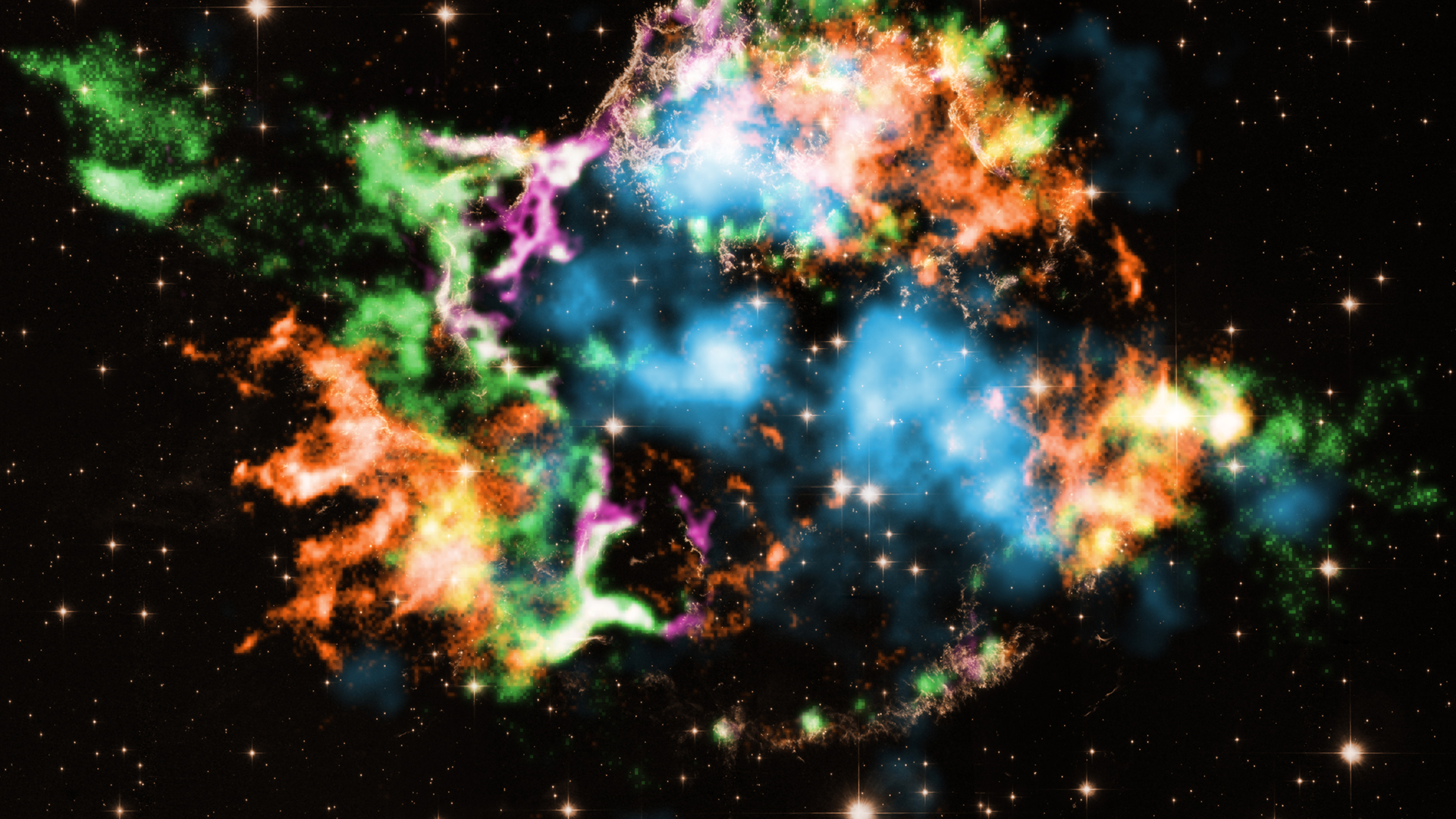X-ray experiment set for 15-minute flight to space to study supernova remnants
Micro-X will test technologies that could fly on big future missions.

A NASA-funded sounding rocket mission is all set to make a short trip to space to test new technologies and collect new information from remains of an exploded star.
The High-Resolution Microcalorimeter X-ray Imaging, or Micro-X, experiment is set to launch Aug. 21 from the White Sands Missile Range in New Mexico.
Sounding rockets don't achieve orbit, but instead send their payloads above the atmosphere for a matter of minutes before they are pulled back to Earth by gravity.
During its brief time in space, Micro-X will collect X-rays to study Cassiopeia A, a massive bubble of material left behind from the supernova that marked the death of a massive star 11,000 light-years away from Earth.
Cas A, as it is known, is one of the most studied objects in the sky, but the experiment aims to provide new insights.
Related: Supernova 'wreckage' blasts out cosmic rays in deep space
"Micro-X has a resolution about 50 times higher than existing orbiting observatories," Enectali Figueroa-Feliciano, a professor at Northwestern University and principal investigator for the Micro-X mission, said in a statement. "The X-ray energy spectrum is like a fingerprint revealing the composition, history, and state of the gas and ejecta from the explosion."
Get the Space.com Newsletter
Breaking space news, the latest updates on rocket launches, skywatching events and more!
As well as its own science objects, Micro-X’s goals also include testing the new detector technologies for future missions that may use them. This could include the European Space Agency-led ATHENA mission, though this could be affected by ESA’s plans to scale back the project to cap costs.
If the flight goes according to plan, Micro-X will descend safely to the ground for recovery. “This project has a potential to do interesting science over several flights. We’re hoping to get it back, refurbish it, and fly it again,” Figueroa-Feliciano said.
You can follow the progress of Micro-X through Instagram.
Follow us on Twitter @Spacedotcom and on Facebook.
Join our Space Forums to keep talking space on the latest missions, night sky and more! And if you have a news tip, correction or comment, let us know at: community@space.com.

Andrew is a freelance space journalist with a focus on reporting on China's rapidly growing space sector. He began writing for Space.com in 2019 and writes for SpaceNews, IEEE Spectrum, National Geographic, Sky & Telescope, New Scientist and others. Andrew first caught the space bug when, as a youngster, he saw Voyager images of other worlds in our solar system for the first time. Away from space, Andrew enjoys trail running in the forests of Finland. You can follow him on Twitter @AJ_FI.









